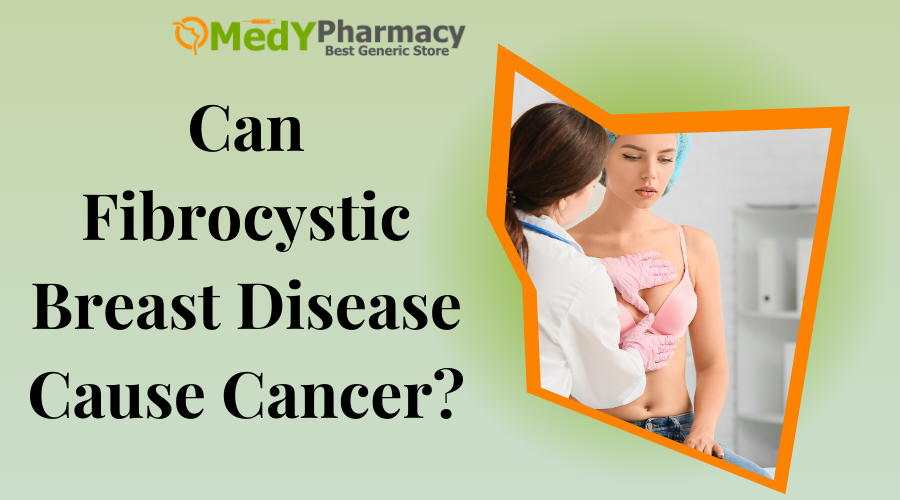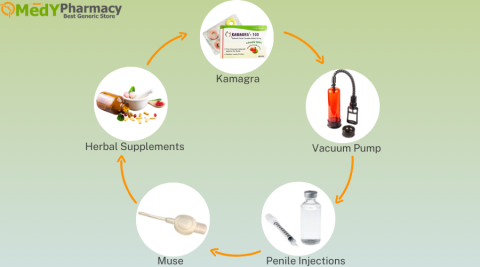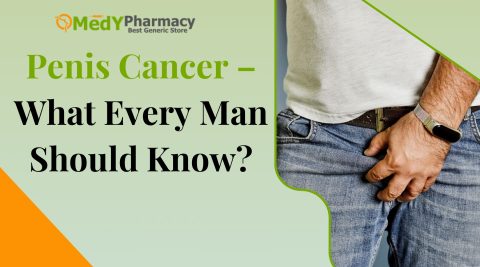Introduction:
Fibrocystic breast illness, as the name implies, is a kind of fibrous cyst seen in the breasts.
Sensitivity in the nipples, the sensation of lumps and nodes inside the breasts, and other symptoms, as we will see in the next sections, are frequently the first signs of such an issue.
In this post, we’ll learn more about this issue and whether it can lead to breast cancer.
Fibrocystic alterations are the cause of many breast lumps. Ligaments and scar tissue are comprised of this same tissue.
One or more fluid collections in a specific location of the breast can also generate lumps. Cysts are the name given to them. This can occur in various areas of the breast or both breasts at the same time.
Symptoms frequently alter in conjunction with your menstrual cycle or other hormonal changes. Treatment is unnecessary for the majority of people. If you have any concerns regarding breast lumps or breast discomfort, you should always consult a healthcare specialist.
What Are Fibrocystic Breasts?
This is a frequent, non-cancerous disorder that creates uncomfortable, lumpy breast tissue. These breast alterations are typically innocuous and do not require therapy. These changes are most obvious right before your menstrual cycle when hormone levels vary. Between the ages of 20 and 50, up to 50% of persons who were born female have fibrocystic breast alterations.
The lumps form when fibrous tissue in your breast gathers in one region, forming a mass. Fibrous tissue may be found in many regions of the body, including the skin, joints, and ligaments. Lumps can also occur when fluid accumulates in a specific location and forms a cyst.
The disorder was originally known as “fibrocystic breast disease,” but healthcare experts no longer use that label for a variety of reasons. First, hormonal shifts are common causes of fibrocystic breast alterations. Second, having this does not always indicate that you have a condition.
Learning about your breasts is one of the most effective methods to detect changes. Examine your breasts regularly, paying attention to their form and size, as well as how they feel when touched. You should also check your nipples and take note of their orientation or whether they discharge when squeezed. These techniques can help you detect whether something about your breasts appears to be changed.
Because changes to your breasts might be difficult to detect on your own, it’s always a good idea to consult a healthcare practitioner if you notice any changes, such as new lumps, growing lumps, or persistent breast discomfort. A clinician can do a clinical breast exam or arrange imaging tests to rule out alternative causes of breast lumps.
What Symptoms Are Associated With Fibrocystic Breasts?
- Breast discomfort or pain, mainly in the outer and higher portions.
- Lumpy, rope-like cysts in your breasts or under your armpit. The lumps may become larger before your period, and then return to their normal size.
- Swollen or full-feeling breasts.
- A brownish discharge from the nipples.
For other people, the symptoms worsen soon before their period begins. Others report that their symptoms remain consistent throughout their menstrual cycle. Others get symptoms that are extremely mild or imperceptible. These alterations might affect either one or both breasts.
- Lumps inside the breasts or breast parts feel thicker.
- Pain in the breast area and nipples
- Feeling like nodes are present in the breast tissues
- Oozing fluid flowing out in the shape of a breast discharge without even applying pressure
- Changes in breast size, with the afflicted one drooping
These difficulties are most commonly encountered in women aged 30 to 50 years. It usually occurs when your menstrual cycle or ovulation cycles alter. Those who have breast cancer owing to excessively high amounts of estrogen should consult with a doctor about taking Altraz 1 mg.
How Does It Feel To Have Fibrocystic Breasts?
These alterations are most commonly described as lumpiness. This can also be described as rubbery, ropey, or uneven. The lumps are typically hard, but their size might vary. For example, some lumps might be the size of a raisin, while others feel more like a grape. When you push on the lumps, you may feel them move under your skin.
What Causes Fibrocystic Breast Flare-Ups?
While specialists are unsure what causes fibrocystic breasts, they suspect it is related to changing hormone levels, particularly estrogen, during the menstrual cycle. Fibrocystic breast flare-ups are most prevalent shortly before your period when estrogen levels are lowest.
Examinations and Tests
Your healthcare practitioner will examine you. The procedure will entail a breast examination. If you detect any changes in your breasts, notify your physician.
- Mammography is used to screen women for early breast cancer when the disease is more likely to be cured. The advice of various expert bodies often differs.
- Mammography is typically suggested for all women beginning at the age of 40 and repeating every 1 to 2 years.
Women who have a family history of breast cancer should consult with their doctor to determine their risk.
Breast cancer is best detected using mammograms in women aged 40 to 74. It’s unclear how efficiently mammograms detect cancer in women beyond the age of 75.
An ultrasound may be used to examine breast tissue more closely in women under the age of 35. If a lump was discovered during a breast check or your imaging results were abnormal, you may require further tests.
If the lump looks to be a cyst, your provider may aspirate it with a needle, which confirms the diagnosis and may alleviate discomfort. Other sorts of lumps may need further imaging. If these tests are normal, but your doctor is still concerned about a lump, a biopsy may be necessary.
Fibrocystic Breast Disease Vs Fibrocystic Breast Changes
This condition is extremely prevalent among women. Although women nearing menopause are the most vulnerable, doctors cannot identify a certain age limit for women to develop this condition.
Scientists and health specialists do not categorize this illness, notably as a breast disease. As a result, it is not fibrocystic breast illness but is commonly referred to as Fibrocystic Breast Changes.
Do not be concerned; there is practically minimal risk that this condition may progress to cancer in the sensitive breast tissues. Although it is prevalent in most of us, women may not notice many changes or indicators that cysts are growing inside their breasts.
Causes of Fibrocystic Breasts
Scientists think that estrogen and other female hormones, such as progesterone, play a significant role in this. Cysts are most commonly formed when these hormones are unusually high.
- Other factors include hormonal fluctuations, particularly during female ovulation cycles.
- Some ladies may experience discomfort, pain, and swelling in the area.
- In over 90% of instances, symptoms peak right before the ovulation cycle. And whenever periods started, they would be dramatically reduced within a few days.
- Remember, however, that the cysts that grow in this scenario are not malignant. These are benign cysts that develop and expand in response to changes in hormone levels and ovulation.
- Actorise 25 is recommended for Fibrocystic Breast Cancer patients.
Who Is Most Prone To Get Fibrocystic Breasts?
This can affect anybody, although they are more frequent in AFAB before menopause. Unless you undergo hormone replacement treatment, fibrocystic breast alterations are uncommon after menopause.
Other variables may raise your likelihood of having fibrocystic breasts, although they are still being debated in the medical world.
Drinking alcohol may raise your chance of developing fibrocystic breast abnormalities, particularly among those aged 18 to 22.
Caffeine is also known to heighten the severity of fibrocystic breast alterations.
What Are The Complications Of Fibrocystic Breasts?
This does not provide any major issues. These changes occur regularly and are frequently associated with hormonal swings. There have been no studies that demonstrate that fibrocystic breast alterations promote or contribute to breast cancer. The sole association is that precancerous or concerning breast tissue may be more difficult to detect in fibrocystic breasts.
What Signs And Symptoms Indicate Fibrocystic Breast Disease?
Symptoms include swelling, tenderness, soreness, tissue thickening, and lumps in one or both breasts.
You can experience greater swelling or lumps in one breast than the other. Hormonal changes will most likely make your symptoms worse shortly before your period, although you may experience symptoms throughout the month.
However, if there is a lot of fibrous tissue, the lumps may be more fixed in one location.
You may also feel soreness beneath your arms. Some ladies develop green or dark brown discharge from their nipples.
If clear, crimson or bloody fluid comes out of your nipple, it might be an indication of breast cancer. Contact your doctor right once.
Fibrocystic Breast Disease, Cancer
This does not raise your chances of developing cancer, but the changes in your breasts may make it more difficult for you or your doctor to detect possibly malignant lumps during breast examinations and mammograms.
The US Preventive Services Task Force advises that women aged 50 to 74 receive a mammogram every two years. The National Cancer Institute also suggests that frequent breast self-exams may be beneficial.
You must become familiar with how your breasts regularly appear and feel so that you can recognize changes or when anything doesn’t seem right.
How Is Fibrocystic Breast Disease Detected?
A physical breast examination might be used by your doctor to detect fibrocystic breast illness.
To further understand the changes in your breasts, your doctor may perform a mammography, ultrasound, or MRI. Women with fibrocystic breasts may benefit from digital mammography, which allows for more accurate breast imaging.
An ultrasound may be used in some circumstances to discern between normal and abnormal breast tissue. If your doctor is worried about the appearance of a cyst or other abnormality in your breast, they may order a biopsy to determine whether it is malignant.
This biopsy is often conducted with a tiny needle aspiration. This is a surgical treatment that involves using a tiny needle to extract fluid or tissue. In some situations, your doctor may prescribe a core needle biopsy, which removes a small quantity of tissue for examination.
Is There A Chance That This Problem May Lead To Breast Cancer?
According to research, less than 1% of instances develop breast cancer. To date, the majority of cysts have been proven to be completely non-cancerous, with no potential of evolving into malignant tumors.
However, there is a solution for the extremely few cases in which the conditions worsen into Fibrocystic Breast Cancer. You just need to visit your doctor and ask about utilizing medications such as Armotraz 1.
Diagnosis of Fibrocystic Breast Cancer
Doctors will want to investigate the problem thoroughly. Externally, they can examine the breast and underarm region for any visible symptoms of enlargement or fluid flow from the nipples.
They may apply physical stress to the Fibrocystic Breast area to see whether nodules have formed, or they may ask the patient if they are in discomfort.
Typically, a doctor will also instruct you to return for another external checkup once the time has passed.
Because fibrocysts appear primarily during menstrual cycles, they should be significantly reduced or eliminated. However, if nodules or signals of discomfort and sensitivity persist in the breast region, a doctor may advise you to undertake further exams and lab tests, such as USG or mammography.
Aside from that, biopsy and tiny needle insertion procedures are used to determine the type of fluid inside the cysts and whether or not the cells are malignant. If they are, your doctor may advise you to take Calutide 50 tablets.
How Can Fibrocystic Breasts Be Treated?
For the most part, these alterations do not require therapy. You may control your pain at home and make yourself more comfortable.
- Use over-the-counter pain medications such as ibuprofen or naproxen sodium.
- When your breasts are in agony, apply warm or cold compresses.
- Wear comfortable and supportive bras, especially when symptoms worsen.
- Avoid some activities, such as contact sports and running.
- Avoid meals and beverages heavy in caffeine and fat, as they might cause unpleasant symptoms in certain people.
If your symptoms are consistent and correspond to your menstrual cycle, your doctor may prescribe birth control tablets to help balance hormone levels.
Vitamin E and evening primrose oil supplements may alleviate breast discomfort in certain fibrocystic breast patients, although these treatments have not been well-researched. Consult your doctor before trying any breast pain supplements.
What Are The Chances For Fibrocystic Breast Changes?
This does not shorten your life or lower your quality of life. The majority of patients discover that they can manage symptoms at home.
These breast alterations, by themselves, do not enhance your chance of developing breast cancer. However, it is always a good idea to ensure that any breast changes are not malignant or indicative of a significant health concern. Your doctor is the best person to tell you if breast changes are alarming or typical. Visit your doctor frequently to discuss your chances of developing breast cancer. They’ll tell you how often you should have mammograms to check on your breast health.
When Should I Visit My Physician?
Any changes in your breasts should be reported to a healthcare physician to rule out significant problems.
- Any new or developing lumps on the breast or armpit
- Nipple discharge, also known as flat and inverted nipples
- Changes in the texture of your skin, such as flaking or dimpling (orange peel texture).
- Breast soreness that persists after your menstruation finishes
How Can I Differentiate Between Fibrocystic Breasts And Breast Cancer?
While fibrocystic breast alterations and breast cancer have certain symptoms in common, they differ significantly. Common breast cancer symptoms that are infrequent in fibrocystic breasts include:
Skin dimpling or other changes: The skin on your breast may have an orange peel feel or begin to flake, becoming dry or discolored.
- Inverted nipples can flatten or turn inward.
- Nipple discharge: Your nipples may bleed bloody or clear fluid.
- Swollen lymph nodes: This might induce an immunological reaction to enlarge your lymph nodes.
How Do You Cure Fibrocystic Breast Disease?
The majority of women with fibrocystic breast disease do not require invasive therapy. Home therapy is typically adequate to alleviate related pain and discomfort.
Over-the-counter pain medicines like ibuprofen and acetaminophen can generally alleviate the pain and discomfort. To alleviate breast discomfort and tenderness, consider wearing a well-fitting, supportive bra.
Some women find that using warm or cold compresses alleviates their discomfort. Try putting a warm towel or ice wrapped in a rag on your breasts and see which works best for you.
Some patients have discovered that decreasing their coffee intake, eating a low-fat diet, or taking essential fatty acid supplements can help them manage the symptoms of fibrocystic breast disease.
However, no randomized controlled research has demonstrated that these or any other dietary adjustments are useful for relieving symptoms.
Can Fibrocystic Breasts Evolve Into Cancer?
If you have fibrocystic breasts, your chance of developing breast cancer does not increase. However, alterations in this tissue may make it somewhat more difficult to detect malignant tissue. You should speak with your doctor about your risk for breast cancer and see what they prescribe.
Management of fibrocystic alterations
Fibrocystic abnormalities in the breast are regarded to be natural, thus treatment is usually unnecessary unless they cause pain.
Painful cysts can be drained using a tiny, hollow needle, which may be done to confirm the diagnosis. If the fluid is removed, it may reappear later, however, cysts may also disappear over time. Surgery may be an option for cysts that recur and cause symptoms.
Most women with fibrocystic alterations who do not have unpleasant symptoms do not require treatment, although their doctor may advise them to monitor the changes carefully. If you are experiencing slight discomfort, well-fitted, supportive bras, heat, or over-the-counter pain medications may assist.
Some women say that avoiding caffeine and other stimulants found in coffee, tea, chocolate, and many soft beverages helps their breast discomfort. Although studies have revealed no obvious relationship between these stimulants and breast discomfort, many women believe that avoiding certain meals and beverages for a few months is worthwhile.
Some doctors offer over-the-counter pain remedies such as acetaminophen or ibuprofen, as well as other medications because breast swelling around the conclusion of the menstrual cycle causes pain for some women.
Some vitamin or herbal supplements have been proposed to reduce symptoms, but none have been proven to be effective, and some may have unwanted effects if used in excessive doses. Some doctors recommend hormones such as oral contraceptives, tamoxifen, or androgens. However, due of the substantial adverse effects, they are often only given to women with severe symptoms.
Following Menopause
This is typically caused by fluctuations in hormone levels. These alterations are frequently cyclical, which means that they coincide with a person’s monthly cycle. Symptoms often appear before the age of 50, however they can also occur after menopause.
Using estrogen and progestin therapy after menopause may raise the incidence of benign breast alterations by 74%, whilst anti-estrogen therapy may result in a 28% reduction in benign breast illness.
Following menopause, a person may have acute or scorching pain or discomfort in one area of the breast rather than the entire breast. This is most likely caused by costochondritis, which is an infection of the rib cage where bone and cartilage meet.
Is There Ever A Cure For Fibrocystic Breast Disease?
Fibrocystic breast alterations might be influenced by hormonal swings. Symptoms may appear and disappear during the menstrual cycle.
These alterations normally lessen with age and may improve with menopause due to lower hormone levels.
Breast health requires proper symptom management and regular monitoring.
How Can I Shrink My Fibrocystic Breasts?
To alleviate fibrocystic breast discomfort, a person could consider:
- Using hormonal birth control
- Consider taking vitamin E or evening primrose oil, using pain medications and warm compresses, and wearing supportive bras.
- Practicing stress-management strategies
- Maintaining a regular workout program.
- Before beginning any new therapies or supplements, you should always consult with a healthcare expert.
Do fibrocystic breasts necessitate a biopsy?
These are usually benign, thus a biopsy is not required in most situations.
However, if there are any alarming signs, such as a new lump that feels different from other lumps associated with fibrocystic alterations, a healthcare provider may urge that a person get a biopsy to rule out cancer.
Does Fibrocystic Breast Disease Increase the Risk of Cancer?
This does not automatically raise your chances of acquiring breast cancer. The existence of lumps and cysts, he notes, might make it more difficult to diagnose breast cancer through routine breast checks and mammography. So, if you have this issue, you will most likely require more imaging, such as ultrasounds and biopsies. This is because breast cancer develops in the TDLUs, which store fluid in fibrocystic breast disease patients.
It is critical to check your breast health closely and conduct regular self-exams to discover any new lumps or regions of concern. Your doctor may also urge you to begin screening at a younger age.
Don’t Miss the Ways to Diagnose Fibrocystic Breast Disease!
The doctor is more likely to recommend various diagnostic tests, including:
- Digital Mammography.
- A normal chest X-ray.
- An ultrasound test.
- Mammographic screening.
Doctors prescribe testing following a breast check. These procedures assist in determining if a tumor is benign or malignant. Typically, an ultrasonic scan is sufficient to determine the state of the tumor. However, in certain circumstances, doctors will perform a biopsy to confirm the diagnosis.
If it is not malignant, therapy is not required. However, if the lady is in pain or discomfort, the doctor may recommend drugs and lifestyle adjustments. On the other hand, physicians begin preparing treatments immediately and advise patients to consult with a cancer expert if the condition is malignant.
This is important for a woman’s overall health. As a result, it is critical to pay attention to any irregularities, lumps, or other changes that may or may not produce pain or discomfort.
Ways to Avoid Fibrocystic Breast Disease.
Breast examinations can be aided by a variety of diagnostic tests worldwide. It aids in the assessment of breast health, as we all know how important it is to understand breasts and their associated disorders. If you see any signs, such as lumps or painful cysts, you should contact a doctor right away.
To help avoid breast illness, experts advocate making lifestyle changes and using home remedies in the early stages of life.
- Limit your caffeine usage.
- Stopping or lowering the use of hormone therapies.
- If you experience any pain or discomfort, apply a warm water bottle or a heating pad.
- Eat less fat.
- Monthly breast examinations.
In addition, health practitioners advocate taking vitamins and nutritional supplements. Most of the time, they can alleviate symptoms and intensity. Vitamin E, for example, has been shown to alleviate breast discomfort.
Treatment of Fibrocystic Breast
Most of the time, if the cyst is tiny and the symptoms are irregular and minor, your doctor may not even recommend therapy.
A doctor will remove fluid from the cysts using extremely fine surgical needles, and the cysts will gradually burst. Throughout this period, you will also get alleviation from all of your ailments.
A doctor will seldom tell you to have surgery to eliminate the cysts. However, it may be necessary if the cyst is larger and continues to cause the patient considerable discomfort.
Another popular treatment method is to utilize pain relievers, typically over-the-counter. It provides you with a few names, such as Tylenol, ibuprofen, and oral contraceptives, which lessen the effects of hormonal fluctuations throughout the ovulation cycle.
If the problem is malignant, you should consult a doctor to learn more about utilizing medications such as Capnat 500.
Last Words:
So, as you can see, most doctors believe that fibrocysts in the breasts do not usually develop into cancer. Some popular strategies to treat the problem include using easy pain relief treatments and avoiding eating too much fat.
You discover fresh or distinct lumps throughout your Medypharmacy Sites. As a result, if you notice any changes in your breasts, you should see your doctor right away.























